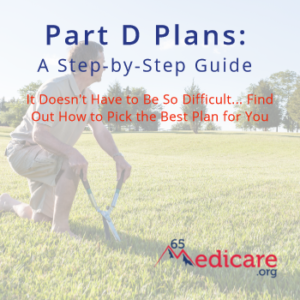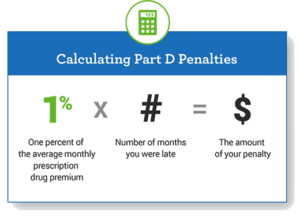Medicare Part D is the part of Medicare that covers prescription drugs. “Original” Medicare (Part A and Part B) does not provide any coverage for prescription drugs. All prescription drug coverage for Medicare beneficiaries is provided through Medicare Part D (How to Compare Part D Plans). So, the question we often get from people turning 65 or just starting on Medicare is “do you have to sign up for a Medicare Part D plan?”
Is Part D a Requirement?
Part D is a voluntary/optional part of Medicare – it is not a requirement to have a Part D plan. You can certainly choose to not enroll in a Part D plan. If you don’t have a Part D plan, you should understand that you would be responsible for any prescription medication costs that you incur. In addition to being responsible for all prescription costs, there are other implications that you should be aware of if you choose to not sign up for a Medicare Part D plan.
What Are the Implications of Not Signing up for Part D When You Are First Eligible?
First and foremost, Medicare has a “late enrollment penalty” for not signing up for Part D when you are first eligible. For many people, this initial eligibility is when you turn 65 and start Medicare. In this situation, you have an initial election period to choose a Part D plan that lasts for seven months – the month you turn 65 plus three months on each side of the turning 65 month. After that initial election period, if you have not signed up for a plan, the late enrollment penalty begins (see below for how that penalty is applied).
For others, if you are covered by a group plan past age 65 (either your plan or a plan through your spouse), your initial eligibility for Part D begins when that coverage terminates. In this situation, you have two months after the group coverage ends to sign up for a Part D plan. After that two month period ends, the Medicare Part D late enrollment penalty would begin.
Besides the late enrollment penalty, there are other implications of not signing up for a Part D plan when you are first eligible. The most significant of these is that you can only enroll in a Part D plan during a valid enrollment period. The valid enrollment periods are:
- Your “Initial Election Period” – when you are first starting Medicare
- A “Special Election Period” – when you are losing group coverage as described above
- The “Annual Election Period” – this period runs October 15 to December 7 each calendar year (plans take effect 1/1 the following calendar year)
In other words, if you miss your initial election period or special election period, you would have to wait until the next annual election period to be able to sign up for a plan. If you get prescribed something mid-year, you cannot just pick up a plan to cover it. The soonest you could be covered under Part D is the next January.
How Much is the Medicare Part D Late Enrollment Penalty?
The Medicare Part D Late Enrollment Penalty is calculated based on how long you have been without creditable prescription coverage. In other words, your penalty is applied when you enroll in a prescription plan. If you wait longer, the penalty will be higher. The penalty is 1% per month that you don’t have a plan. The 1% per month is multiplied by the “national base beneficiary premium” – for 2024, this is $34.70.
For example, if you turned 65 in April of 2020, have no other drug coverage, and enrolled in a Part D plan to start 1/1/24, your penalty would start after your initial election period expired (August of 2020). Your penalty would be for 41 months – .41 x $34.70 = $14.23. They round this to the nearest .10, so you would pay $14.20/mo on top of the Part D premium of the plan you select.
It is important to note that the “national base beneficiary premium” for Part D changes over time. Thus, your Part D late enrollment penalty can also change over time.
Also, the penalty is a permanent penalty. It stays with you as long as you have a Part D plan and does not go away or get reduced over time.
Who Needs to Sign up for a Medicare Part D Plan?
As you can see in the example above, the Part D penalty can be significant. With Part D premiums (for 2022) starting at around $7-8 in most states, most people find it beneficial to have at least minimal Part D coverage when they start with Medicare, even if their medication needs are non-existent. 
If you are someone who does use prescription drugs, it certainly is beneficial to sign up for a Medicare Part D plan. The most advisable way to do this is to compare the plans based on how well they cover your specific medications. You can run a comparison on Medicare.gov to do this – instructions for doing it are listed here.
If you have questions about your transition to Medicare – Part D or anything else related to the transition – you can reach us at 877.506.3378 or online.


